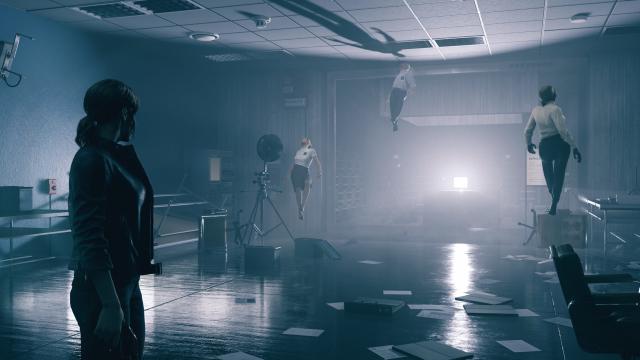Khronos Group, the company behind the Vulkan application programming interface (API), announced today that it now supports ray tracing the buzzword friendly feature Nvidia pushed and console makers like Sony and Microsoft seem to be adopting into their next-gen consoles. The support makes it the only cross-OS platform API to do so. The updated Vulkan API is publicly available for developers to use, and Khronos hopes to receive enough feedback from the developer community before specifications are finalised.
Developers and engineers from Nvidia and Intel are also working with Khronos to standardise the API for use in their products, like Intel’s upcoming Xe GPU architecture, which Intel graphics software architect Joshua Barczak claims, in a press release provided by Vulkan, will include a roadmap for hardware-accelerated ray tracing support. Additionally, in the same press release, Nvidia research director Morgan McGuire said it will ship new beta drivers today that support the new provisional standard for Vulkan ray tracing.
Vulkan differs from DirectX in a few key ways: Vulkan is a 3D graphics and computing API based on parts of AMD’s Mantel API, which supports the graphics cards in the PS4 and Xbox One. Vulkan is also a cross-platform API, so it can be used on Windows, macOS, Linux, etc. Even Google Stadia uses Vulkan. It’s also designed to provide more balance between CPU and GPU usage.
DirectX is a Microsoft-specific set of APIs that handle the same processes, but it can’t be used on any platform other than Microsoft Windows. DirectX was used in the very first Xbox, but now Xbox gets its own APIs. Nvidia GeForce graphics cards support both DirectX and Vulkan.
“The overall architecture of Vulkan Ray Tracing will be familiar to users of existing proprietary ray tracing APIs,” said Daniel Koch, senior graphics system software engineer at NVIDIA and Vulkan Ray Tracing task sub group chair at Khronos, in the press release. In other words, developers should, hopefully, have no problem adapting to Vulkan from Microsoft’s DirectX Raytracing (DXR).
This helps to explain why we recently saw a glimpse of the next-gen Xbox running Minecraft with a ray tracing AMD GPU, which was based on Nvidia’s ray tracing code. Koch goes on to claim that this new Vulkan standard makes porting of existing ray tracing content straightforward while introducing “new functionality and implementation flexibility.”
As far as Vulkan is concerned the future of ray tracing could be a mostly Vulkan future, considering its a cross-platform API and there’s been a lot of talk of both AMD and Intel releasing ray tracing capable desktop GPUs this year. Also, porting games like Control and Metro Exodus to a standardised Vulkan API should be easy, so it’s also possible that gamers will be able to play any ray tracing-capable game currently available on Windows on the Xbox Series X once it’s released.
Khronos also mentioned that it is “primarily focused on meeting desktop market demand for both real-time and offline rendering,” which could mean two things: One, we’ll see desktop ray tracing graphics cards from AMD and Intel by the end of the year, although no official release date has been given for either; and two, ray tracing will come to Google Stadia, since it uses Vulkan on Linux based servers with AMD GPUs.
Since ray tracing isn’t currently available on consoles, having a standardised Vulkan API will make it easier to have the same games, especially with ray tracing, be available across all platforms, whether Windows, Mac, Xbox, PlayStation, Linux etc. Since you can’t use DXR on a non-Microsoft platform, Vulkan will be key in bringing games to PlayStation, Stadia, and elsewhere. If embracing the APIs is as simple as Vulkan claims this could be a very big deal.
